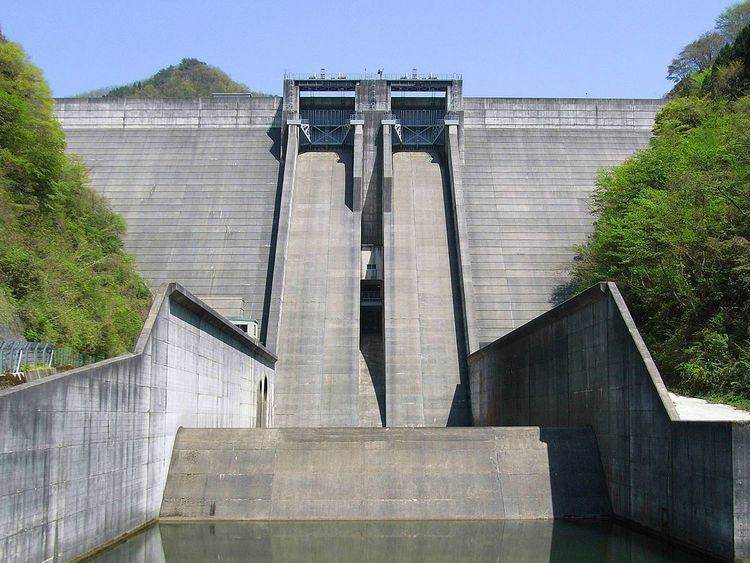Country Japan Status Operational Type of dam Concrete gravity Height 69 m | Opening date 1984 Construction began 1978 | |
 | ||
Similar Ebi Station, Tamahara Dam, Muko Station, Nabara Dam, Kannagawa Hydropower Plant | ||
The Matanoagawa Dam (俣野川ダム) is a concrete gravity dam on a tributary of the Hino River located 2.3 km (1 mi) south of Kōfu in Tottori Prefecture, Japan. Construction on the dam began in 1978 and it was complete in 1984. The primary purpose of the dam is hydroelectric generation and it creates the lower reservoir for the Matanoagawa Pumped Storage Power Station (俣野川発電所). It is 69.3 metres (227 ft) tall and creates a reservoir with a 7,940,000-cubic-metre (6,440 acre·ft) storage capacity. The power station is located on the southern bank of the reservoir and contains four 300 megawatts (400,000 hp) Francis pump-turbine-generators. The upper reservoir for the pumped-storage scheme is created by the Doyo Dam located 6 kilometres (3.7 mi) to the southeast in Okayama Prefecture. To generate power, water from the Doyo Dam is sent to the power station, used to generate electricity and then discharged into the Matanoagawa Reservoir. This occurs when energy demand is high and when it is low, water is pumped back up to the Doyo Dam as stored energy. The same pump-generators that pump the water to Doyo reverse and generate electricity when it is sent back down. The first generator was operational in 1992 and the last in 1996.
